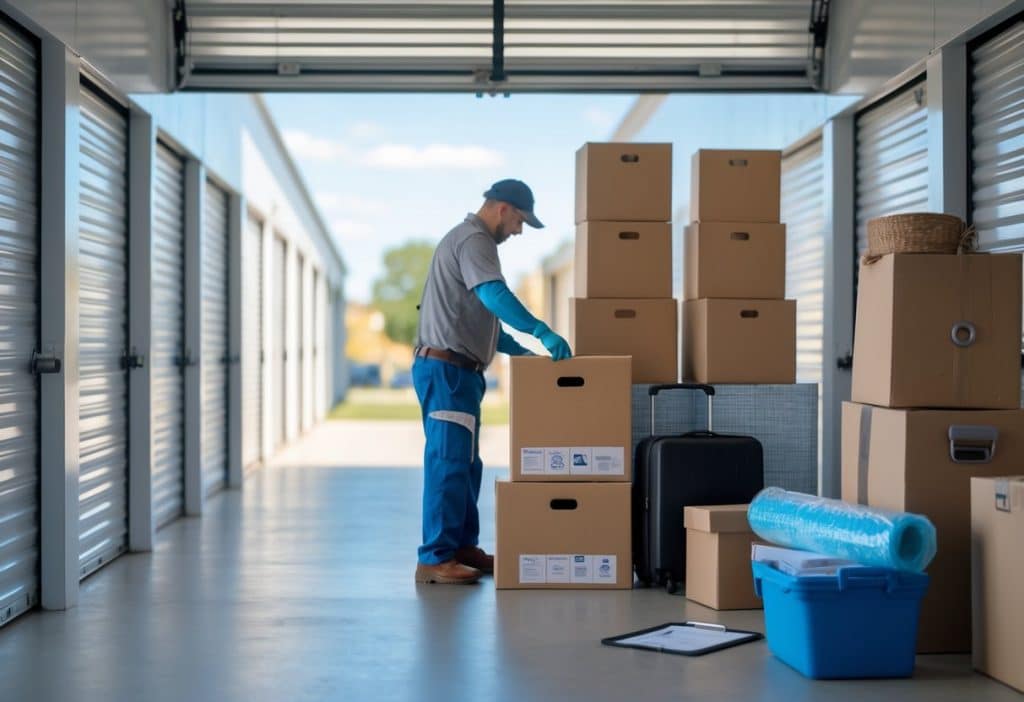Self-storage offers a convenient solution for decluttering, moving, or simply creating extra space. However, the traditional approach to storage can often be wasteful, relying on disposable materials and neglecting environmental considerations. Fortunately, with a few conscious choices, you can make your self-storage experience significantly more eco-friendly, minimizing your impact on the planet while still protecting your belongings.
-
Sustainable Packing Materials:
Traditional packing materials like bubble wrap and Styrofoam peanuts are often made from plastic and can take hundreds of years to decompose. Opt for eco-friendly alternatives:
- Recycled Cardboard Boxes: Source used cardboard boxes from local businesses, friends, or online marketplaces. Check for sturdy boxes in good condition. Alternatively, purchase boxes made from recycled materials.
- Biodegradable Packing Peanuts: These are made from renewable resources like cornstarch and are compostable.
- Packing Paper: Use unprinted newsprint or recycled paper as a cushioning material instead of bubble wrap.
- Blankets and Towels: Utilize old blankets, towels, and linens to wrap and protect fragile items. This repurposes existing materials and reduces the need for new packing supplies.
- Reusable Storage Containers: Invest in durable, reusable plastic bins or containers instead of disposable cardboard boxes. These can be used for storage even after you no longer need the self-storage unit.
- Avoid Plastic Wrap: Minimize the use of plastic wrap for securing items. Opt for twine, rope, or reusable straps instead.
-
Optimizing Space and Reducing Waste:
Effective packing and organization not only saves space but also reduces the need for additional supplies and storage units.
- Inventory Your Items: Before packing, declutter and decide what you truly need to store. Donating, selling, or disposing of unwanted items reduces the volume of belongings you need to store.
- Maximize Space: Disassemble furniture when possible to save space. Stack boxes efficiently and utilize vertical space by using shelving units inside the storage unit.
- Proper Labeling: Clearly label all boxes and containers to avoid unnecessary rummaging and prevent items from being forgotten or left behind. Use recycled paper labels or reusable tags.
- Avoid Storing Hazardous Materials: Do not store hazardous materials like paints, chemicals, or flammable liquids in your storage unit. These pose environmental risks and are often prohibited by storage facility regulations.
- Donate or Recycle Unwanted Items: When you’re finished with your storage unit, consider donating or recycling any unwanted items instead of throwing them away. Many storage facilities partner with local charities to facilitate donations.
-
Minimizing Environmental Impact During Transport:
Transportation to and from the storage facility contributes to carbon emissions. Consider the following:
- Combine Trips: Plan your trips to the storage unit efficiently to minimize the number of journeys.
- Use Fuel-Efficient Vehicles: If renting a vehicle for moving, choose a fuel-efficient option or consider renting from a company that offers hybrid or electric vehicles.
- Local Movers: If hiring movers, choose a local company to reduce travel distances. Inquire about their sustainability practices.
-
Maintaining a Clean and Organized Unit:
Keeping your storage unit clean and organized not only protects your belongings but also contributes to a more sustainable environment.
- Regular Cleaning: Periodically clean your unit to prevent dust and pests. Use eco-friendly cleaning products.
- Prevent Pests Naturally: Instead of using chemical pesticides, consider natural pest control methods like cedar chips or diatomaceous earth.
- Proper Disposal: Dispose of any trash or unwanted items responsibly. Utilize the facility’s recycling program or take items to appropriate recycling centers.
-
Supporting Sustainable Businesses:
By choosing storage facilities and suppliers that prioritize sustainability, you are supporting businesses that are making a positive impact on the environment. Research and choose companies with demonstrable commitments to eco-friendly practices.
-
Long-Term Considerations:
Think about the long-term implications of your storage choices.
- Reduce Consumption: The most sustainable approach is to consume less in the first place. Consider whether you truly need to store certain items or if they can be sold, donated, or repurposed.
- Digital Storage: For documents and photos, consider digitizing them to reduce paper consumption and the need for physical storage space.
- Regular Review: Periodically review the items you have in storage and declutter as needed. This prevents items from being forgotten and ensures that you are not storing things you no longer need.
By implementing these eco-friendly tips, you can make your self-storage experience more sustainable and contribute to a healthier planet. Small changes can make a big difference, and by making conscious choices, we can all play a role in promoting environmental responsibility. Remember, sustainable practices not only benefit the environment but can also save you money in the long run.
Author
-
Arthur Waldmann is the Marketing Director at Iron Storage and a thorough researcher of the self storage industry. Feel free to send any questions his way.
View all posts








